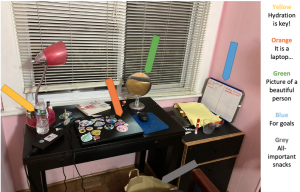My Home is a Museum project which aims to create an ongoing conversation around the weekly prompts inspired by the events happening the globe. Everyone who sends submissions to weekly prompts can suggest prompt ideas for the following weeks. The proposed themes are used in the order that they are received.
Abigail Epplett, is the last week’s participant who suggested “Death” as a prompt for new – Week 7. This is how she explained her choice:
“I was inspired by the cow vertebrae I keep on the filing cabinet next to my desk. I got it from my aunt’s farm a few years ago– her family rents grazing land to the Boston Beef butchers. The vertebrae reminds me of Georgia O’Keeffe‘s western paintings, which often feature cattle bones. I know cultural perception of “death” is highly variable around the world, so I thought it would be interesting to see what mortuary objects other people had around their houses.”
Let me remind you how to participate.
- Choose an object what fits the theme
- Take 1-3 pictures of the object
- Please describe how your object reflects the theme of the week. This is your chance to make your object shine and share its story 🙂
Please include the answers to the following information when submitting your entry:
- What it your name?
- Where do you live?
- What do you do?
Email your pictures and descriptions to Sayyara.huseynli@tufts.edu
P.S. Please note that by submitting your response to this project you agree to its public display.




